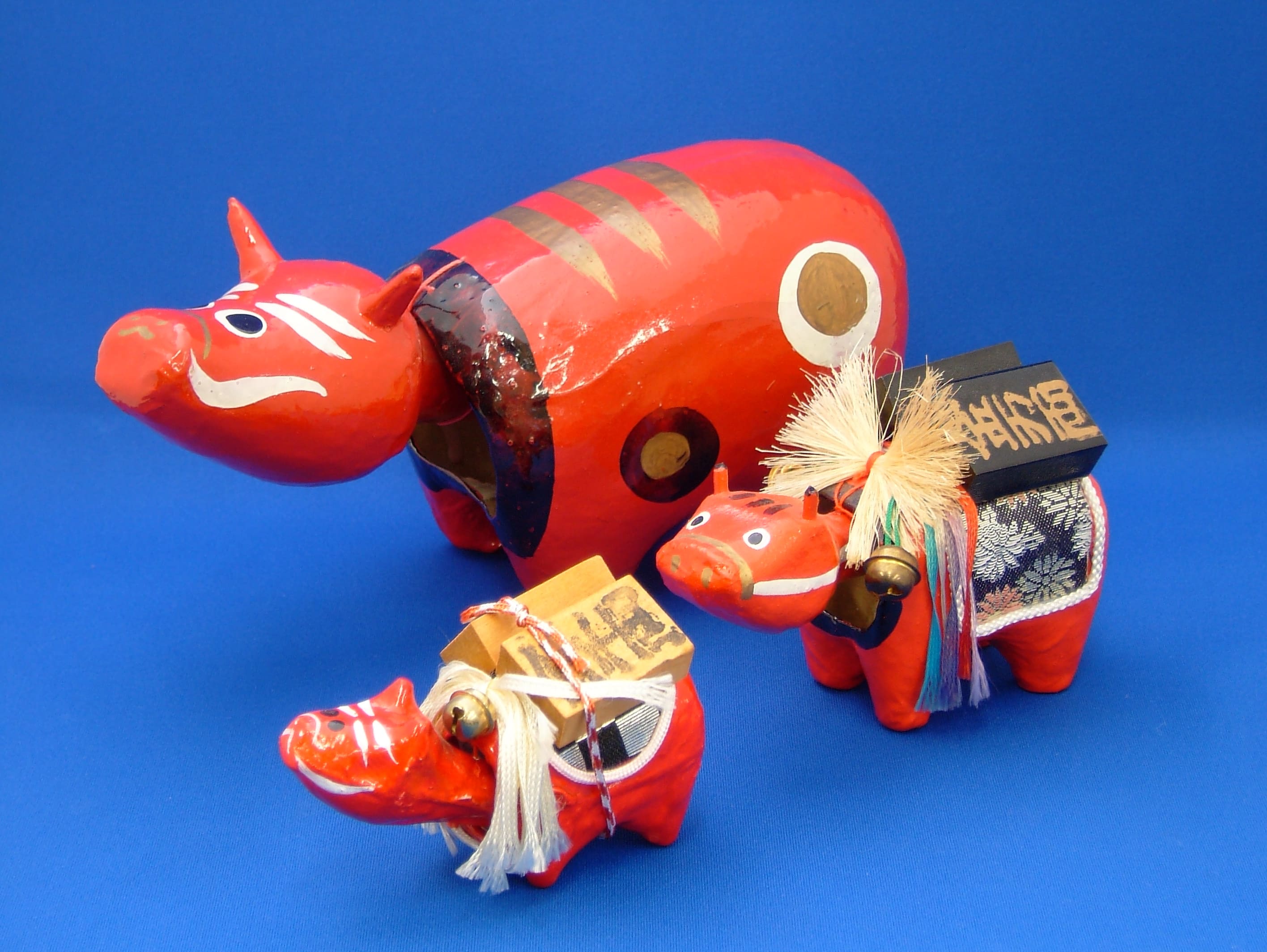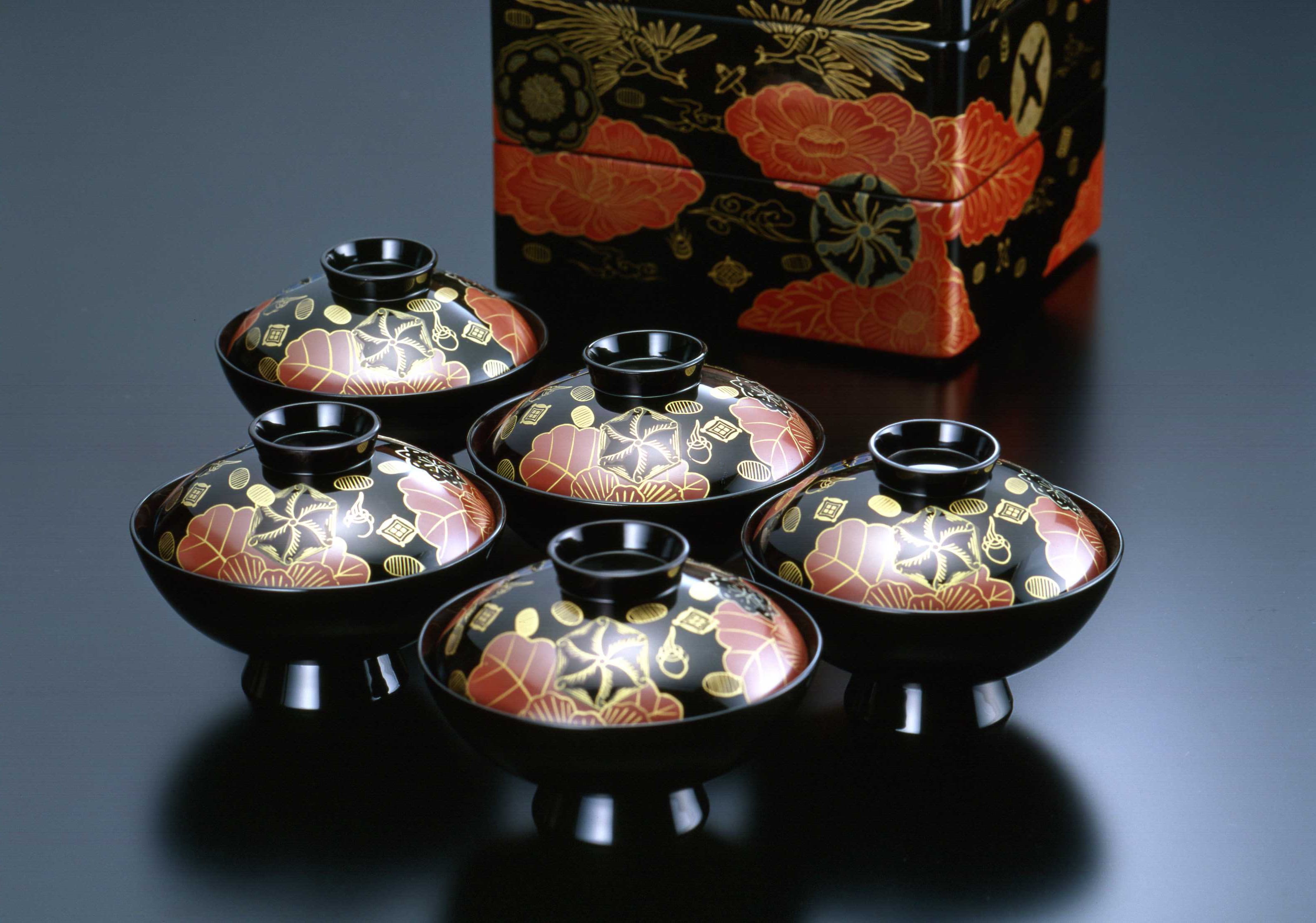Traditional Craft—Akabeko Painting

Akabeko are small red figurines of cows or oxen. They were created as playthings and good-luck charms for children more than 400 years ago and are now a symbol of Aizu-Wakamatsu. Akabeko (lit., “red cow”) are made of papier-mâché, with an elongated neck fitting into a hole in the cow’s body. The long neck allows the head to move up and down, giving the akabeko its characteristic head-bobbing motion.
There are several theories about the origins of akabeko, but one of the most popular comes from Enzoji Temple in the Aizu region. Residents used cattle to help transport heavy materials when they were building the temple circa 807. A mysterious “red” cow (probably a brown cow) suddenly appeared and began leading the other animals, working tirelessly until the task was completed. The grateful people erected statues of the cow in the temple grounds, and over the years akabeko became associated with good health and fortune.
A symbol of good fortune
When Gamo Ujisato (1556–1595) was appointed lord of the Aizu region in 1590, he explored ways to create new sources of income for his samurai. After hearing the story of the akabeko at the temple, he invited artisans to create small toys based on the red cow and establish a toy-making industry in the region. Around this time, smallpox broke out in Japan. It was thought that children with akabeko toys were less likely to catch the disease, which boosted their popularity as a good-luck charm. Red has traditionally been the color of good fortune and protection against ill luck in Japan, so it is possible that the color of akabeko led to this association.
Akabeko are still handmade today and are one of Aizu-Wakamatsu’s best-known folkcrafts. The craftsperson soaks Japanese washi paper in a mixture of glue and chalk and then wraps it around a wooden mold to create the cow. When the paper is dry, they split the cow in half to remove it from the mold, then rejoin the two pieces again using more layers of paper. The head and neck are attached in the hollow body with a string.
Hands-on workshops give visitors the opportunity to try painting their own cow for a one-of-a-kind souvenir. In recent years, these workshops, which are suitable for all ages, have become popular with school groups and visitors. Ready-made versions of the cows can be found in gift shops throughout the city.

his English-language text was created by the Japan Tourism Agency.
Related Places
-
- Aizu Lacquerware
-

The Aizu region has been a leading producer of high-quality wooden lacquerware for more than 400 years, originating with the efforts of two leading figures. Ashina Morinobu (1408–1451) promoted the.....read more